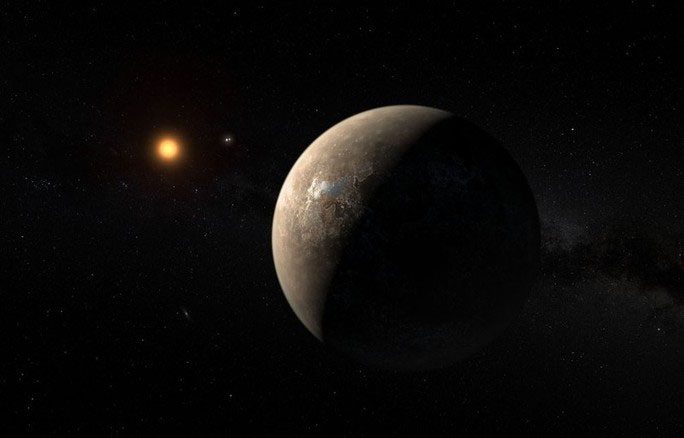Scientists have discovered a brain switch that holds promise for enabling future astronauts to cross the boundaries of the Solar System and explore Earth-like exoplanets.
Interstellar travel is a dream of humanity, especially as advanced observational tools have helped us identify numerous Earth-like exoplanets that could potentially host extraterrestrial life.
The technical challenges may seem daunting, but they are considered surmountable, especially given that some human spacecraft have already reached the edge of the Solar System, notably NASA’s Voyager 1 and 2, which have begun entering interstellar space.

An exoplanet of Proxima Centauri, humanity’s dream destination – (Photo: NASA)
However, according to Science Alert, Voyager 1, at its current speed, would take a staggering 73,000 years to reach the nearest “other solar system,” Proxima Centauri, a star believed to host an Earth-like planet. Even with modern spacecraft speeds significantly increased and addressing the effects of cosmic radiation, the travel time remains far too long for humans.
This is the challenge that scientists from the Shenzhen Institute of Advanced Technology (SIAT) under the Chinese Academy of Sciences are attempting to address: they aim to create a “hibernation” state that can help astronauts temporarily “pause” biological time, allowing them to survive through generations of time.
The groundbreaking experiment has seen initial success in animals and has identified the “golden key.”
“Here, we found that activating a population of neurons in the preoptic area (POA) using a chemical method reliably induced hypothermia in both anesthetized and non-anesthetized monkeys” – researchers wrote in a publication in the journal The Innovation.
The experiment demonstrated that the thermoregulatory center in primates can also be influenced to safely enter a hibernation state, which can help them withstand cold temperatures and low oxygen levels.
Lowering body temperature slows metabolism to a minimum, with biological activities just sufficient to prevent muscle atrophy.
The study involved three Macaca fascicularis monkeys, with their brain function monitored carefully using fMRI (functional magnetic resonance imaging). A synthetic drug called Clozapine N-oxide (CNO) was used to induce the hibernation state.
If the monkeys were anesthetized, CNO caused a reduction in core body temperature, preventing external warming, demonstrating the role of POA in thermoregulation.
The alert monkeys showed better results, entering hibernation similar to hypothermic mice. However, these monkeys exhibited increased heart rates and trembling, which scientists will need to address before moving to clinical trials.
Nonetheless, this is the first evidence proving the feasibility of the hypothermia approach to induce artificial hibernation, marking a significant step towards enabling humans to participate in interstellar travel.


















































